Could this be the year wearing light-up smart goggles goes mainstream?
Apple, Meta and others have spent billions of dollars betting that virtual reality headsets will be the future. This could be the year they finally win the battle for our eyeballs, writes Andrew Griffin

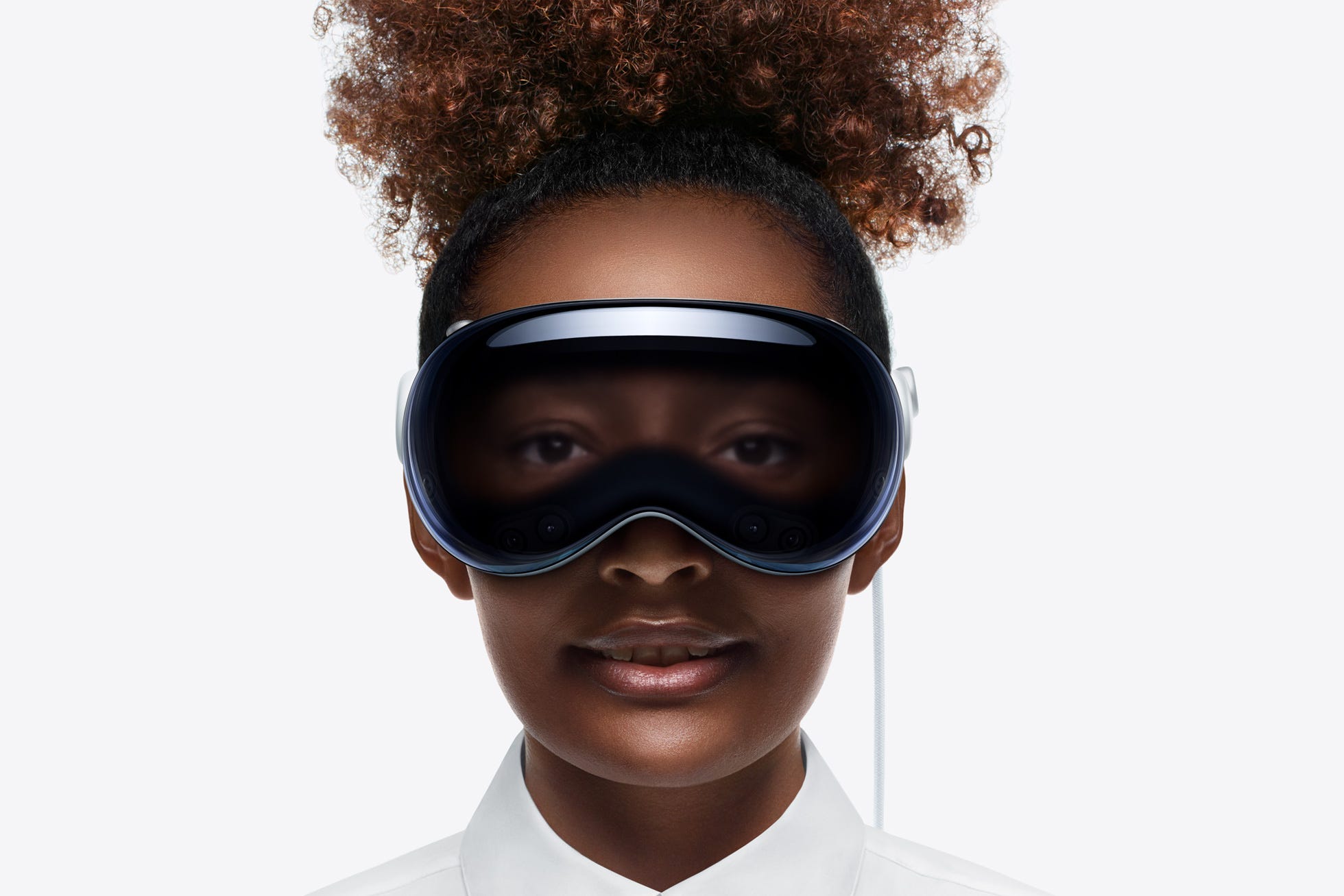
In recent years, technology companies have been trying desperately to get onto people’s faces. From their beginnings decades ago, there has been a clear belief among the inventors of Silicon Valley that people want some kind of information projected onto their eyes. They have often been wrong: probably the most notable augmented reality hardware is the Google Glass, most famous as a kind of cautionary tale.
And then there’s the two most famous virtual reality headsets – Apple’s Vision Pro and the Meta Quest. But what exactly is Apple’s “vision”? And what’s the destination of Meta’s “quest”? These two tech giants appear equally stuck in the kind of crisis that comes with the onset of maturity. To be blunt: what are they, and what are they for?
The obsession with getting onto people’s faces and into their eyeballs isn’t new. The first virtual reality headset – according to Guinness World Records – was the “Sword of Damocles”, developed in 1968. It took its name not from its import as the pioneer of VR, but from its physical weight: it was so heavy that it had to be suspended from the ceiling above its wearer, like the mythical sword.
Even 56 years ago, the function of the headset was largely the same. It showed a simple environment that could be navigated by turning your head: doing so would be picked up by sensors in the unit that would then redraw the world. It even included the option for augmented reality, and its inventor, Ivan Sutherland, noted that the “displayed material” could be overlaid on “maps, desk tops, walls, or the keys of a typewriter”, which is exactly how Apple showed off its Vision Pro.
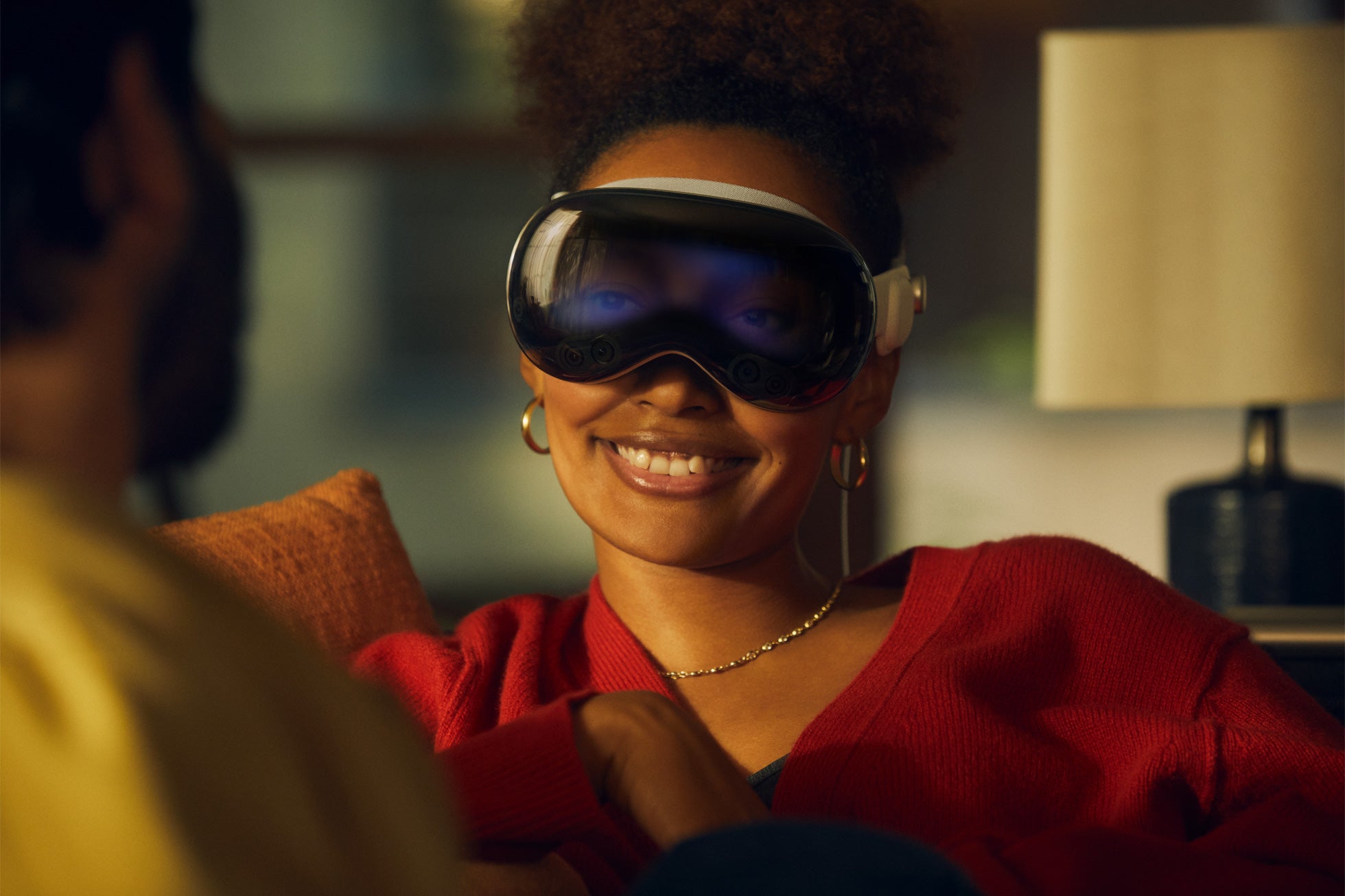
When it revealed that headset, in June, Apple had no major tricks beyond those suggested by Sutherland. Its vision was for mixed reality: users could inhabit an entirely virtual world, sitting in a cinema to watch a film for instance, or they could overlay virtual objects onto the real one for augmented reality. It was the latter that seemed to interest Apple most, and the demos were largely of existing technologies brought into that new and digital world: apps made up of floating panels that would stay in place as you moved around them, for instance.
The headset hardware came with a broader philosophy that Apple referred to as spatial computing, and which in many ways is the more important thing launched by Apple recently. Spatial computing is the idea that virtual objects can be tied to real space: first introduced decades ago, it is the idea that our digital life can break out of its flat screen and be spread across real physical space.
It is a grand idea exemplified in a relatively humble way. The price of Apple’s headset is far from small – it “starts at” $3,500 (£2,765), and users must pay more for slot-in optics if they wear glasses – but everything else is relatively modest, at least for a company of Apple’s size. Various rumours suggest stock will be very limited when the headset launches next month, and Apple seems mostly to be targeting developers. Apple’s plan, for now, seems to be about getting the technology into the hands of developers so that the experiences and technology of the future are ready.
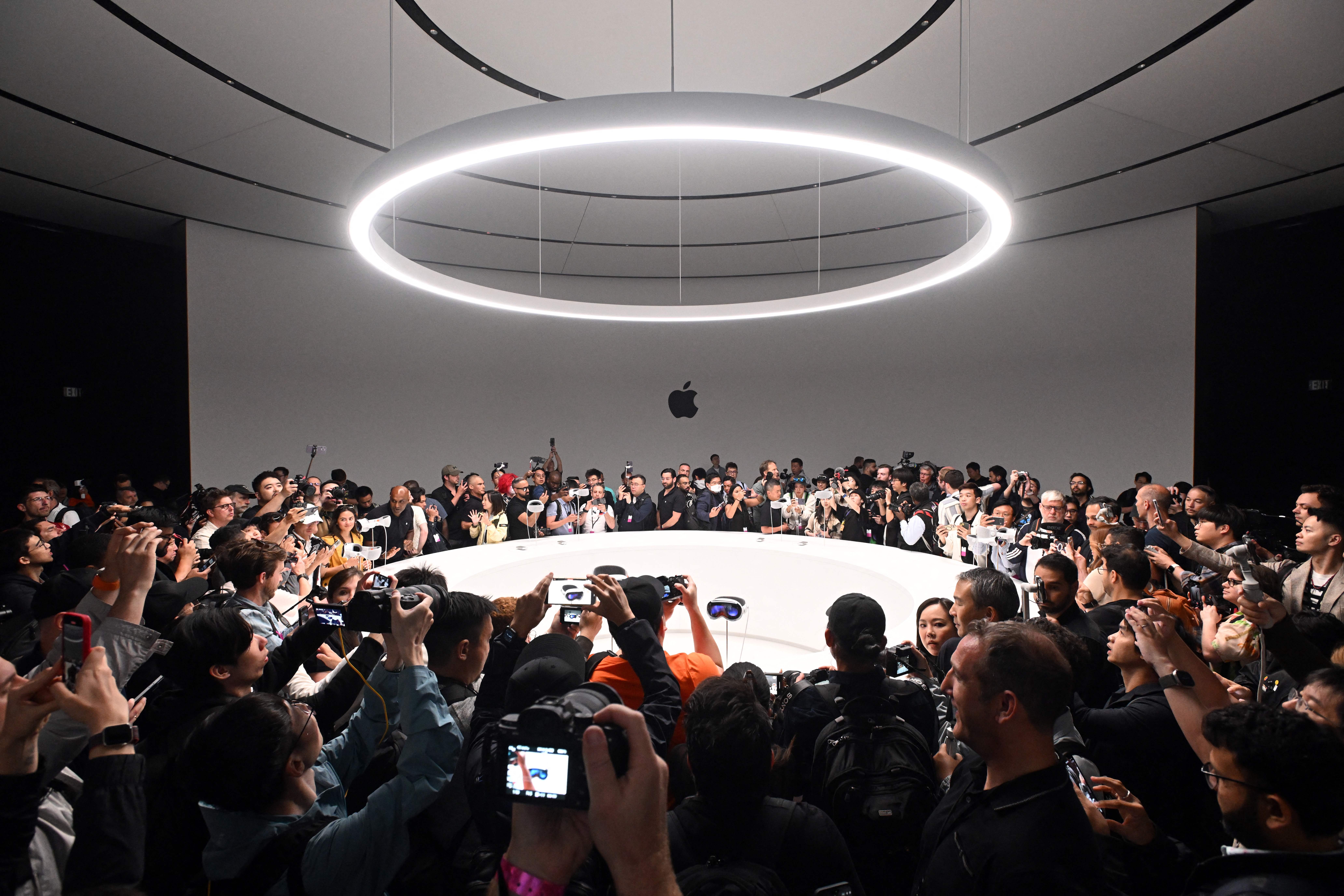
Apple is often depicted as both cuttingly innovative and overly opinionated; the company that builds the future and then asks us to come to it. But when it launches entirely new products and platforms it often does so with an unusual humility, and it has shown a flexibility in allowing customers to choose what its products are actually for. The first iPhone launched without apps; the Apple Watch launched with many features that have since been removed. Apple is following the same playbook, launching an early version into the world and letting people decide what they actually want to do with it, which could take years.
Virtual reality, clearly, takes a long time. While there are a host of other mixed-reality headsets available, at various stages of development, the primary competitor to Apple’s Vision Pro is surely the Meta Quest. Facebook parent company Meta has taken a similar approach to Apple with its headsets, pouring money into a technology that it is convinced that people will eventually want, but which for now is a long way from mainstream.
Meta’s first version of its Ray-Ban smart glasses only sold 300,000 units, and fewer than 10 per cent of the people who bought them were actually regularly wearing them, according to a report from The Wall Street Journal last year. Snapchat had tried before, and had similarly weak sales; Google Glass has become a byword for failure. Sometimes smart glasses seem like they are powered mostly by a brute stubbornness: these are the future, the companies say, whether you like it or not, and eventually you’ll see it for yourself.
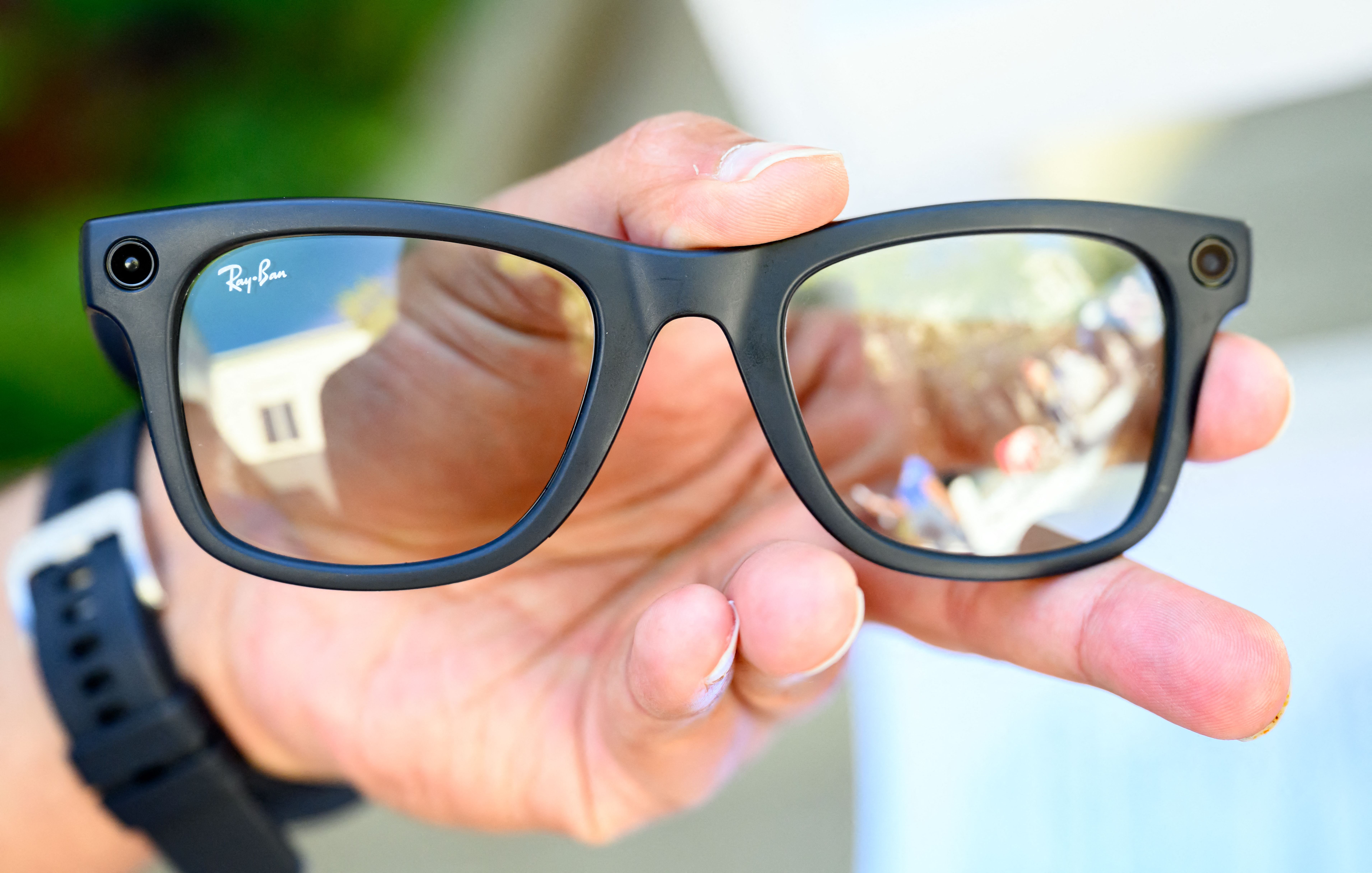
In the third quarter of last year, in its most recent results, Meta said that its Reality Labs unit made an astonishing $3.74bn loss. Its revenues actually dropped compared with the same period the year before, taking in just $285m. Those numbers didn’t include the effect of the release in mid-October of the Meta Quest 3, its first mainstream headset to be released since 2020.
The two headsets, launched within months of each other, made clear that a battle was being fought for our heads and our eyeballs. Apple has leaned in to quality, making clear that it believes its headset is the best on the market by some distance; Meta has explicitly addressed Apple’s launch, painting it as so expensive as to be exclusive, and its own tech as more accessible. The two companies have fought before but are now competing to define and benefit from the future.
But the fact that the two headsets were launched by two of the biggest companies in the world must be helpful consolation as well as competition; both companies have decided that the technology is coming, even if they don’t agree about who will get to make it. It means that 2023 could be the year the computing platforms of the future were truly introduced to people; 2024 might perhaps be the year that people start wearing them. This year could be the first that people don’t see someone wearing a VR headset as an eccentric.
The Quest 3 is notable in that a large part of the focus is on augmented reality, not virtual reality, just like with Apple’s headset. While it is often the virtual worlds that gather the headlines, they also have a tendency to make people feel cut off and sometimes even physically sick. Throughout the release of Apple’s Vision Pro, the company went to some lengths to make clear that it would allow people to stay in touch with the outside world – even putting a separate display on the outside of the goggles for people to see – focusing on augmented reality in part as a way of ensuring that people still stayed connected to each other.
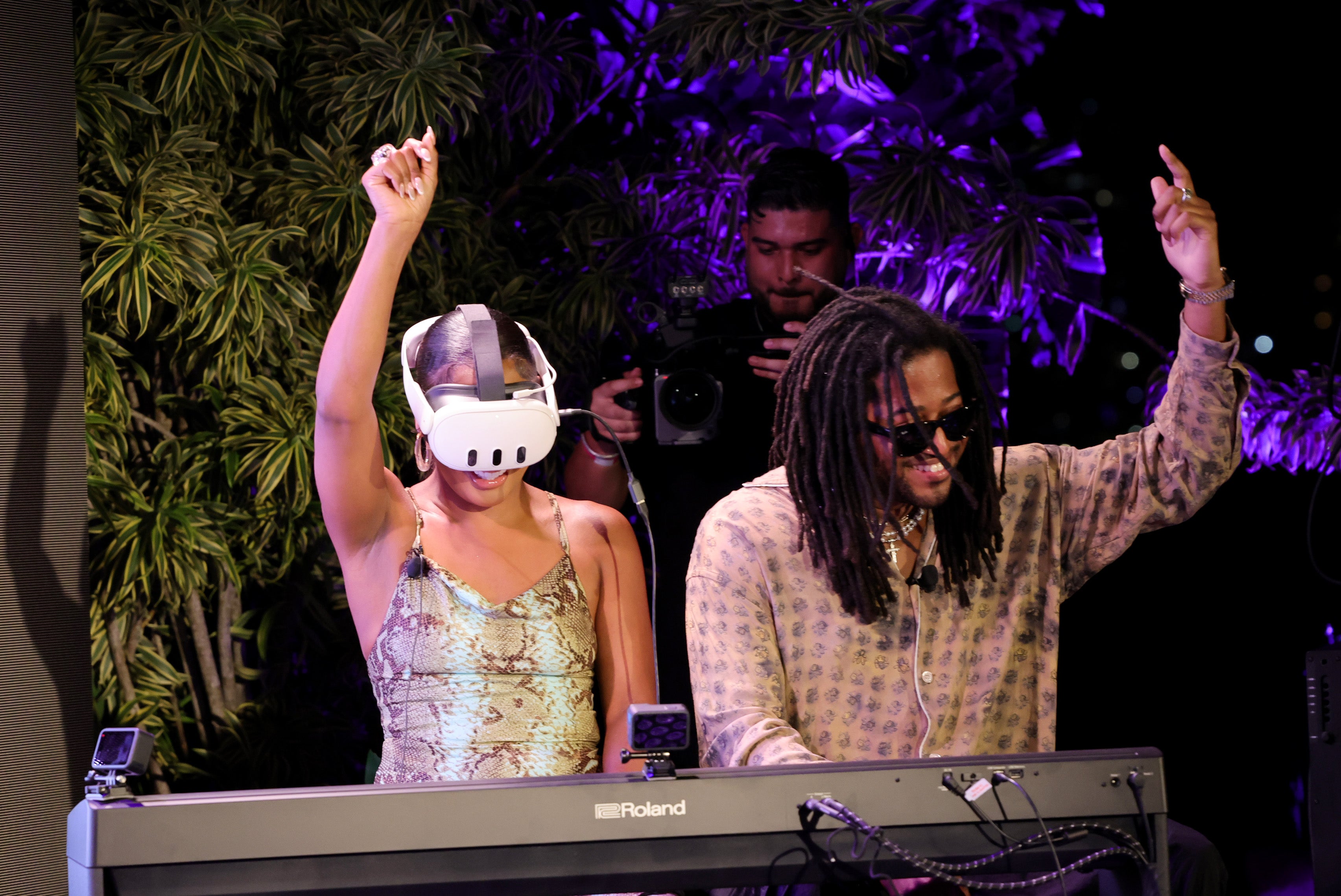
Meta and Apple probably don’t want mixed reality to keep living in large, heavy ski goggles attached to people’s heads. The dream is that all of the hardware will fade away, leaving behind a wearable pair of glasses that lets people see into the real world as well as any virtual ones too.
Meta has been explicit about this. As well as the Quest headset, it is also working on smart glasses in collaboration with Ray-Ban – they are just like a normal pair of sunglasses, but include a camera on the side and microphones and speakers in the arms, so that people can, for instance, ask to take a picture of whatever they are seeing. At the moment they can’t actually display anything, but Mark Zuckerberg has been clear that he sees truly smart glasses – essentially a combination of the design of the Ray-Bans with the visuals of the Quest – as a “holy grail” device that could be here relatively soon.
It means that both companies, as well as their competitors, are standing on the edge of a precipice. Both have devices that are clearly not their dream technologies. Each has released them nonetheless in the hope that they can introduce consumers to the idea of wearing them, and developers to the idea of making experiences for them.
The two companies are pouring billions of dollars into those foundational technologies, betting their future on them, and are very clear that they see them as the future of computing. The big question is whether the public will share their vision.
Join our commenting forum
Join thought-provoking conversations, follow other Independent readers and see their replies
Comments
Bookmark popover
Removed from bookmarks